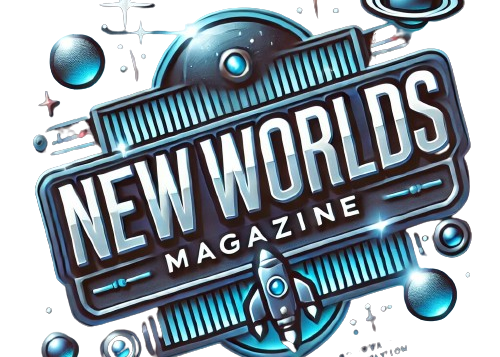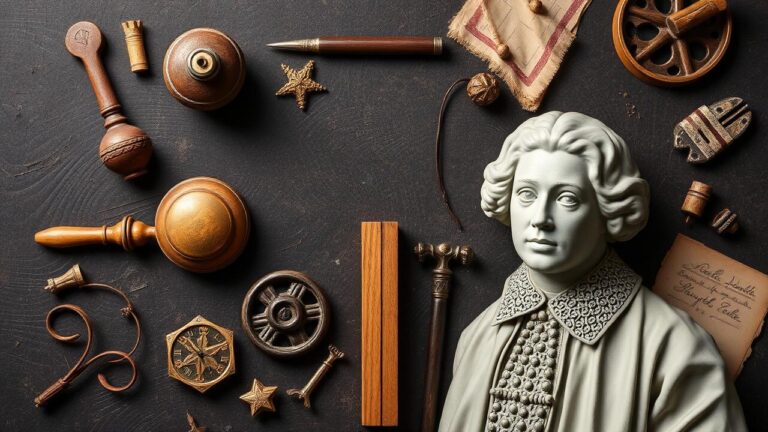Table Of Contents
Discover Why Historical Figures Still Capture Our Imagination
Key Takeaways
- The lasting charm of prominent individuals continues to engage us.
- Famous characters significantly influence our perceptions and culture.
- Psychological factors explain our deep interest in notable figures.
- Narratives play a crucial role in preserving historical events.
- The significance of inclusivity and variety in historical representation.
Why Historical Figures Still Capture Our Imagination | The Enduring Appeal of Historical Figures
Historical figures continue to captivate our minds and evoke strong emotions because they embody lessons and experiences from the past that resonate with our present. Their stories often serve as a bridge between ancient histories and contemporary life, allowing us to explore the complexities of human nature within a rich historical context. The allure of historical fiction plays a significant role in this fascination, as authors weave narratives that breathe life into these figures, making them relatable and compelling. Art historians and scholars delve into the intricacies of these personalities, revealing how their legacies shape our understanding of history and identity. Why historical figures still capture our imagination lies in their ability to reflect our values, struggles, and aspirations through the lens of narrative history and the emotional weight of a well-crafted historical novel.
Why Historical Figures Still Capture Our Imagination | Lessons from the Past
Historical figures continue to captivate our imagination because they embody the complexities of human experience. Stories from the medieval era to colonialism provide rich narratives that reveal the struggles and triumphs of various civilizations. The history of slavery, for example, is explored not only in academic texts but also in the poignant exhibits of the National Museum of African American History and Culture. These narratives shape our understanding of past injustices and triumphs, creating a deep sense of nostalgia for the lessons they impart. Such historical contexts prompt us to reflect on our own values and beliefs, illustrating the ongoing relevance of these figures.
The allure of alternative history and myths around historical personalities also contribute to our fascination. Historians and writers engage in literary fiction that reimagines the lives of these figures, allowing us to explore different outcomes and decisions. The museum of African American history serves as a crucial space for this exploration, highlighting the importance of representation and the diverse narratives that were often overlooked. Each story serves as a reminder of the resilience and ingenuity of individuals who shaped our world, reinforcing Why Historical Figures Still Capture Our Imagination.
Relatable Human Experiences
Historical figures often resonate with us due to their relatable human experiences that echo the complexities of our own lives. The narratives of leaders like Napoleon, who faced both glory and tragedy, become modern fables illustrating the triumphs and struggles inherent in the human condition. These tales, much like folk tales passed down through generations, invite us to explore themes of creativity and revolution. By looking into the national archives and museums, we can flesh out the deeper stories behind these iconic personalities, highlighting the universal emotions that connect us to the past.
The allure of these historical figures lies in their embodiment of our shared struggles and aspirations. Their stories often reveal timeless lessons wrapped in masterpieces of artistry and literature. Each narrative serves as a mirror reflecting our values while bridging the gap between the past and present. This is why historical figures still capture our imagination, as they symbolize the enduring legacies of human emotion and experience. From the legends preserved in the national archives to the creative retellings that shape our traditions, these figures remind us that our own lives are also woven into the larger tapestry of history.
Iconic Personalities and Their Impact
The allure of historical figures is deeply woven into the fabric of our cultural narratives, often influenced by how they are portrayed in art and fiction. Herodotus, regarded as the father of history, sparked the genesis of historical thought, urging society to reflect on the past. This reflection shapes the historical imagination, allowing us to draw lessons from pivotal events like the American Revolution. Such moments become treasures of the collective memory, inspiring new stories and interpretations. As we delve into the lives of these influential figures, we explore why historical figures still capture our imagination, revealing the intertwining of real experiences with the imaginary. Through this lens, historical figures morph into symbols, embodying our aspirations, struggles, and values, leaving lasting impressions that transcend time.
Defining Moments in History
Historical events serve as pivotal moments that solidify the connection between past and present. These events showcase why historical figures still capture our imagination, as they often embody the zeitgeist of their eras. Through historical works, we gain insights into actual history, allowing us to explore the complexities of human experiences. This meticulous process of historical thinking enhances our understanding of how these defining moments shaped modern history, creating a narrative that enriches our imaginations.
The interplay between historical figures and significant events invites a deeper historical explanation. Mythical history often weaves itself into actual history, highlighting how prominent individuals influenced their societies and altered the course of events. These historical figures become symbols in our collective consciousness, representing ideals, struggles, and triumphs that resonate across generations. Engaging with historical events fosters a greater appreciation for the past, allowing us to navigate the nuances of historical facts while enriching our historical understanding.
- The signing of the Declaration of Independence in 1776 marked the birth of a new nation.
- The fall of the Berlin Wall in 1989 symbolized the end of the Cold War and the reunification of Germany.
- The Civil Rights Movement of the 1960s fought for racial equality and significantly impacted American society.
- The invention of the printing press in the 15th century revolutionized the spread of information and ideas.
- The moon landing in 1969 represented a significant achievement in human exploration and technology.
- The Industrial Revolution transformed economies, societies, and the way people lived and worked.
- The establishment of the United Nations in 1945 aimed to prevent future conflicts and foster international cooperation.
Cultural Representations in Media
Cultural representations in media play a crucial role in shaping our understanding of historical figures. They bring historical subjects to life, allowing audiences to engage with their stories through the lens of their own imaginations. A creative historian or narrative historian often balances historical accuracy with mythic history, crafting narratives that make the past accessible and relatable. This synthesis fuels why historical figures still capture our imagination, as their portrayed experiences resonate with contemporary themes and emotions.
The depiction of historical persons in films, novels, and other forms of media serves as a bridge between past and present. These representations provide insightful commentary on the forces that have shaped our world while also inviting viewers to explore their own creative imagination. By navigating through chronology and employing imaginative storytelling, historical fiction writers evoke a deeper understanding of the context surrounding these figures. This dynamic interplay between reality and creativity is central to why historical figures still capture our imagination, urging audiences to reflect on the lessons and legacies of the past.
Psychological Reasons Behind Fascination
The concept of imagination plays a crucial role in understanding why historical figures still capture our imagination. These iconic personalities often embody heroic qualities, serving as founding figures in significant historical events. Through creative imagination, we construct vivid, imaginative pictures of their lives that transcend mere historic facts. The historical process encourages us to delve into their stories, allowing us to see the multifaceted nature of their character. This fascination is not simply about learning from the past; it’s about how these historical figures speak to us, challenging our contemporary views and values. Pure imagination fuels engagement with their narratives, making historical writing resonate deeply within our lives. As we explore these stories, we find that our fascination stems from a desire to connect with the lessons they offer, illustrating compelling examples of resilience and courage.
The Hero Archetype
The concept of the hero archetype has been a powerful force in shaping narratives across centuries. Many historians note how historical characters embody traits admired by society, serving as touchstones for resilience, bravery, and morality. From the pages of history books to dramatic portrayals in historical series, these figures often reflect ideals that resonate deeply in the contemporary world. The stories of these historical protagonists invite audiences to engage with past realities and envision how such traits can influence national histories today.
Artistic creation surrounding historical figures continues to thrive, underscoring the timeless fascination with the hero archetype. As our imagination differs from one generation to the next, this dynamic allows each era to reinterpret these legendary characters in ways that speak to contemporary values. British history, alongside other narratives, showcases how these heroic figures can transcend their time, becoming symbols of hope and inspiration. Through this lens, the enduring appeal exemplifies why historical figures still capture our imagination, providing a bridge between the past and present.
Reflection of Our Values and Beliefs
Historical figures often embody the values and beliefs of their respective eras, making them powerful symbols in American history. The documented history of these individuals spans from the 17th century through the entire history of the United States, allowing contemporary audiences to reflect on their significance. For historical novel readers, these figures serve as connections to the past, emphasizing the dynamic imagination necessary to understand their choices and actions. Such imaginative portrayals blend historical fidelity with creative interpretation, capturing the essence of both real and imagined ones.
The fascination with historical personalities arises from our own values, which are often influenced by the mythic origin stories presented through various narratives. From the nineteenth century onward, imaginative artists have depicted these figures in ways that resonate deeply with modern beliefs and aspirations. Their stories reflect societal progress, cultural shifts, and the evolving nature of morality, illustrating why historical figures still capture our imagination. Ultimately, the interplay between documented history and the creative lens through which it is viewed allows us to explore and affirm what we hold dear in our contemporary lives.
| Historical Figure | Era | Key Values Represented |
|---|---|---|
| George Washington | 18th Century | Leadership, Unity, Sacrifice |
| Frederick Douglass | 19th Century | Freedom, Equality, Justice |
| Rosa Parks | 20th Century | Courage, Civil Rights, Nonviolence |
| Martin Luther King Jr. | 20th Century | Equality, Peace, Hope |
| Malala Yousafzai | 21st Century | Education, Empowerment, Resilience |
The Role of Storytelling in Keeping History Alive
Storytelling serves as a vital bridge connecting modern audiences to real-life figures from various historical epochs. Through the lens of imaginative thinking, we explore the lives of tragic figures and historical actors, transforming their experiences into compelling narratives. This artistic endeavor not only aids historians in their craft but also deepens our understanding of the medieval reformation and other significant historical time periods. In this way, storytelling captivates us, emphasizing the word imagination and our ability to grasp complex events and characters. By examining the trials and triumphs of these figures, we uncover insights that answer the question of why historical figures still capture our imagination and provoke reflection on our values and beliefs.
Biographies and Memorable Narratives
The imaginative process of crafting biographies serves a critical narrative purpose in exploring the lives of historical figures. Great historians create literary portraits that bring forth the origins of past events, ranging from the medieval church’s undertakings to the exploits of ancient nations. These historical accounts allow readers to engage with the dynamic essence of individuals who shaped the great century and the twentieth century. Such vivid storytelling fulfills our curiosity about the lives of figures who have influenced our world, illustrating Why Historical Figures Still Capture Our Imagination.
Through the lens of myth-making, historians relate tales that transcend a static imagination. Each biography not only documents achievements but also humanizes figures, revealing vulnerabilities and triumphs alike. This multifaceted approach invites readers to connect on a personal level, fostering empathy and a deeper understanding of the societal context in which these individuals operated. By exploring these memorable narratives, one can appreciate why historical figures still capture our imagination and resonate across time.
The Influence of Fictional Adaptations
Fictional adaptations of historical figures often provide a creative interpretation that resonates with contemporary audiences. The way a late historian moves through the 18th century and presents a figure can spark interest and invite us to imagine the triumphs and struggles of that era. These narratives weave a rich history into new stories, allowing academic historians and creative literature enthusiasts to view the past through a lens that emphasizes both historical dualism and the humanity of these characters. This blending of fact and fiction captures the imagination, illustrating why historical figures continue to hold a special place in our hearts.
Creative adaptations also allow for the exploration of themes found in religious classics and other significant texts. By reimagining these figures, storytellers highlight the universal experiences that connect us to the past. They create an engaging platform for understanding how values and beliefs have evolved over time. Such representations invite audiences to reflect on their own lives while rooting them in the context of a rich historical narrative. This ongoing dialogue between history and storytelling illustrates why historical figures still capture our imagination in profound ways.
The Importance of Representation and Diversity
Representation and diversity in the portrayal of historical figures enrich our understanding of past civilizations and the myriad traditions that shaped them. These vivid portraits of triumphs and struggles create an imaginative essence that resonates with modern audiences, allowing tales from history to come alive. Literary scholars often emphasize how narrative books and narratives can bridge the gap between old facts and contemporary values. History speaks not only through the accounts of empires but also through the diverse voices that have been historically overshadowed. For instance, the Bible recounts stories that reflect a range of experiences, demonstrating that Why Historical Figures Still Capture Our Imagination involves embracing a broader spectrum of human heritage. By addressing these historical blind spots, we deepen our connection to the past and its relevance to our present.
- Increased empathy towards diverse populations and their experiences
- Enhanced critical thinking by challenging traditional narratives
- Greater engagement in storytelling and historical discourse
- Encouragement of inclusivity and representation in all fields
- Preservation of cultural heritage and values
- Promotion of social justice and equality in education
- Inspiration for future generations to explore their own histories
Addressing Historical Blind Spots
The fascination with historical figures often stems from how they are portrayed within the broader narratives of their respective times. Imaginative design in storytelling can either illuminate or obscure the complexities of their lives. For instance, the British World Empire offers a dualistic narrative, showcasing achievements while also revealing darker aspects of colonization. These tales become a national ghost story, inviting successive generations to ponder the mysteries of the past. Why Historical Figures Still Capture Our Imagination hinges on this intricate interplay between heroism and moral ambiguity, fueling our desire to understand their choices.
Recent years have highlighted the need to explore historical blind spots, especially those involving marginalized groups. An imaginative person delves into the stories that have been overshadowed or neglected, providing a more comprehensive view of history. A modern example can be seen in the reexamination of the 13th century, where the narratives often centered around dominant figures, leaving out important voices. By embracing a more inclusive approach to storytelling, we enrich our understanding of the past and uphold the essence of Why Historical Figures Still Capture Our Imagination.
Conclusion
The fascination with historical figures stems from their ability to reflect both our enduring legacy and real tragedy. As we navigate presentism, we often reinterpret the past through our current values and beliefs. This dynamic highlights why historical figures still capture our imagination, as they embody complex narratives that resonate across generations. Through long traditions of storytelling, these personalities become more than mere characters; they transform into symbols from which we draw lessons and insights relevant to our lives today. Their stories remind us that history is not just a distant memory but a living tapestry informing our present and future.
FAQS
How do historical figures in literature enhance our historical learning and understanding of their particular historical setting?
Historical figures embody the zeitgeist of their eras, allowing readers to explore imaginative perceptions of the past reality. The historical novel society emphasizes the importance of creative imagination works, which often relate to historical documentation and the natural history of civilizations rise. By engaging with these characters, we can delve into the historical forces that shaped their lives while using sufficient imagination to interpret their mythic origin story and the dualistic narratives surrounding them.
How do historical figures contribute to our understanding of the relationship between imagination and historical reality?
Historical figures play a significant role in shaping our historical imaginations, as they allow us to engage creatively with the past. By exploring the way history presents real life figures, historians acting within the historical discipline can bring forth new stories that enhance historical learning. This imaginative process often takes imagination deals with the historical setting and context, enabling us to relate to those figures in a more meaningful way. For instance, when examining the medieval church undertook in the thirteenth century, a historian relates the events and figures creatively, turning historical record into a captivating mystery story that enriches our understanding.
In what ways does the portrayal of a historical figure speak to our term imagination and the creative intellect required to understand history, particularly in the context of the thirteenth century were?
The portrayal of a historical figure often serves as a catalyst for the term imagination, engaging us in a new story that explores the complexities and nuances of a particular era. When historians act as storytellers, they take imagination into account, allowing for a deeper understanding of the same time history while highlighting the creative intellect needed to interpret events from the thirteenth century and beyond.
In what way do historical figures speak to our imagination and how does this affect a historian acting within the context of history, especially regarding the thirteenth century?
Historical figures speak in profound ways by allowing us to bridge the gap between the past and our current understanding. It takes imagination to envision their lives, struggles, and contributions, which is essential for a historian acting in a thoughtful manner. This imaginative approach enables us to grasp the complexities of the thirteenth century that weren’t documented thoroughly, thus enriching our comprehension of history.
How does the portrayal of a historical figure speak to our imagination and what way does it take imagination to understand how historical events of the thirteenth century weren shaped?
The portrayal of a historical figure speaks to our imagination by providing a narrative that brings life to historical events and allows us to engage emotionally with the past. This way—which takes imagination—involves interpreting the actions and motives of these figures, leading us to a deeper understanding of how the events of the thirteenth century weren influenced by their decisions and the societal context of the time.
In what way do historical narratives require imagination to connect with the lives of historical figures?
The relationship between historical narratives and historical figures often takes imagination; it allows us to construct a more vivid understanding of past events and the complexities of human experience. Each historical figure invites us to visualize their struggles, motivations, and societal contexts, showcasing how history is not merely a collection of facts but a story that takes imagination to fully grasp.
What is the way in which historical narratives help us understand the past and why does it take imagination to connect with the experiences of historical figures?
Historical narratives play a crucial role in helping us understand the past by providing context and depth to the lives of historical figures. The way we engage with these narratives often requires imagination, as it allows us to visualize their experiences and comprehend the complexities of their lives within their respective historical settings. It takes imagination to empathize with their challenges and triumphs, creating a deeper connection to history.
What is a way that studying historical figures takes imagination to comprehend their impact on society?
Examining historical figures requires a deep understanding of their context and actions, which takes imagination to explore how their lives and decisions shaped society in meaningful ways.
What is a way in which examining the actions of historical figures takes imagination to appreciate their significance in shaping events?
Examining the actions of historical figures is a way that takes imagination because it allows us to envision their thoughts, motivations, and the context in which they operated. This imaginative engagement helps us to appreciate their significance in shaping events, providing a deeper understanding of how those figures influenced the course of history and society.
In what way do modern interpretations of historical figures take imagination to resonate with today’s society?
Modern interpretations of historical figures in various mediums require creativity and engagement, as it takes imagination to connect their experiences and values with contemporary issues. This way of understanding not only enhances our appreciation for their contributions but also fosters a deeper dialogue about their significance in shaping events that still affect society today.







